Introduction
In the competitive landscape of architecture, the strategic implementation of outsourcing has emerged as a pivotal approach for firms seeking to enhance operational efficiency and project outcomes. By delegating specialized tasks to external experts, organizations can tap into a wealth of knowledge and experience, streamlining processes that traditionally consume significant resources. As architectural firms increasingly recognize the value of high-quality visualizations and collaborative planning, the ability to adapt to varying project demands becomes essential.
This article delves into the multifaceted advantages of architectural outsourcing, exploring its impact on cost efficiency, access to expertise, and improved project management, ultimately illustrating how this practice can empower firms to focus on their core competencies while driving innovation and client satisfaction.
Understanding Architectural Outsourcing: A Comprehensive Overview
Outsourcing in design is a strategic method that allows firms to assign particular design tasks and responsibilities to external specialists, thereby enhancing overall operational efficiency. By incorporating trusted 3D design visualization services, such as those offered by J. Scott Smith Visual Designs, organizations can significantly enhance communication and client engagement. Our design rendering process transforms abstract concepts into clear, realistic representations, allowing for clearer idea conveyance and quicker buy-in from stakeholders.
The range of design externalization can differ significantly, including services like:
- Drafting
- 3D visualization
- Management
For example, companies such as Gensler and Perkins+Will have effectively adopted design delegation to enhance their workflows and elevate results. Recent statistics suggest that the architectural external services market is projected to grow by 15% in 2024, reflecting the increasing reliance on external expertise for efficiency and innovation. Present patterns indicate a transition towards hybrid approaches to external services, where companies integrate internal capabilities with external assistance to improve adaptability and responsiveness to task requirements.
This nuanced comprehension of external service aspects is crucial for companies considering this approach, as it can result in enhanced delivery timelines, better resource allocation, and the early resolution of design problems through 3D visualizations. As Peter Eisenman aptly noted, ‘To be an architect, you have to be a scientist, an artist, a politician, and a builder.’ This multifaceted role underscores the importance of leveraging external expertise to fulfill diverse architectural demands efficiently.
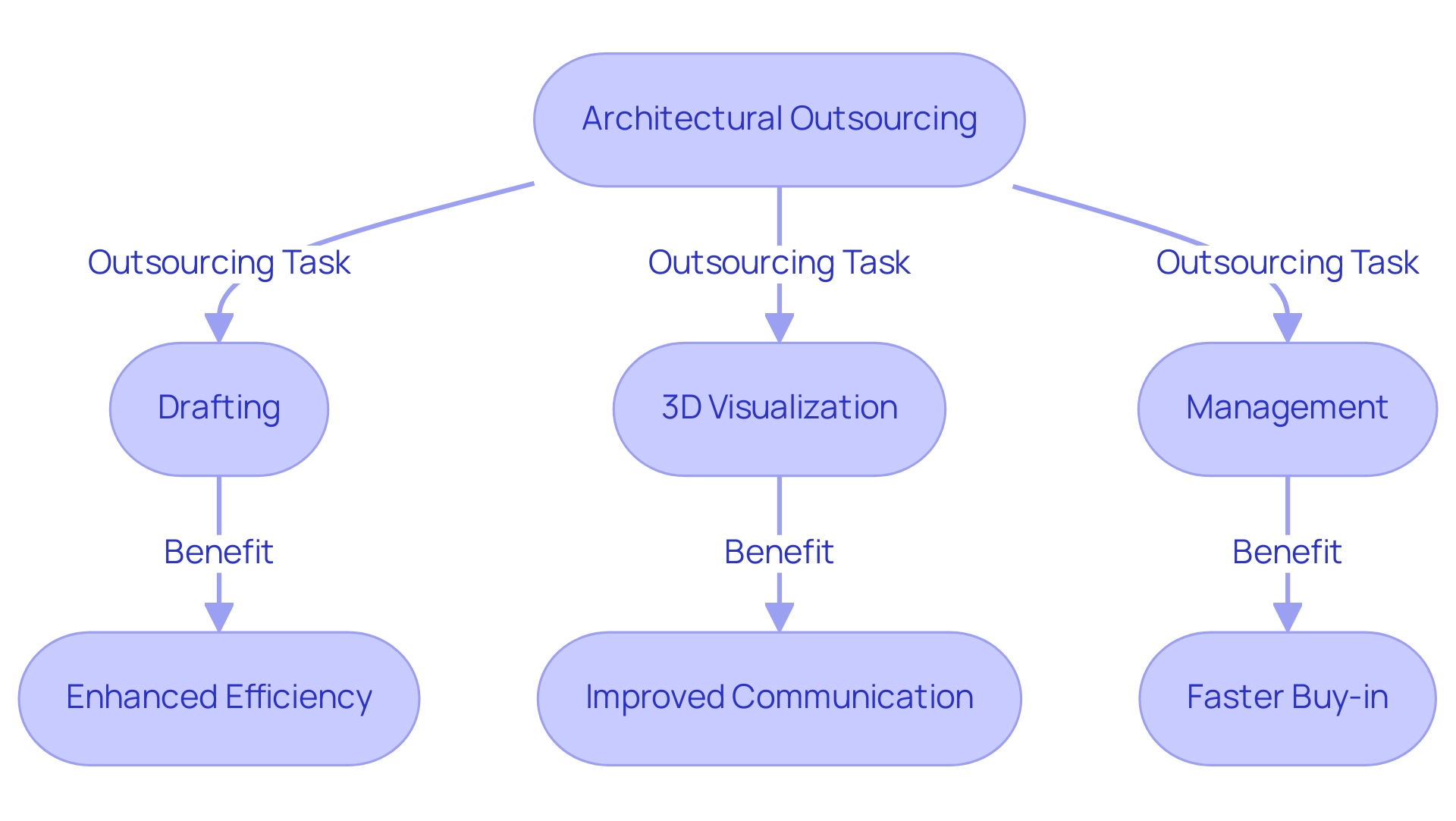
Key Advantages of Architectural Outsourcing for Modern Firms
Architectural outsourcing offers numerous benefits for modern companies, especially in improving efficiency and obtaining specialized skills essential for success. By delegating non-core activities, organizations can redirect resources toward strategic planning and client engagement. This not only encourages innovation but also builds confidence in the vision through effective pre-sales visualization. High-quality renderings serve as a vital tool, allowing stakeholders to visualize the potential of an initiative and make informed decisions, thus generating investment well before the physical manifestation of designs.
The ability to collaborate with industry experts introduces fresh perspectives, facilitating creative solutions to complex design challenges and resulting in higher-quality outcomes. Recent statistics from 2024 indicate that businesses adopting external services can save an average of 30% on operational costs, funds which can then be reinvested into growth and innovation initiatives. Furthermore, as emphasized by Roger K. Lewis in his insightful work, ‘An endeavor can consume thousands of worker hours,’ highlighting the essential requirement for efficient resource management. By utilizing external talent, companies can significantly lower operational expenses while gaining flexibility in managing workloads, thereby making the use of external resources a strategic necessity for architectural practices aiming to thrive in a competitive environment.
Furthermore, case studies such as the partnership between XYZ Architects and an external design firm demonstrate how companies successfully enhance their internal capabilities with outside expertise. This partnership resulted in a 25% decrease in delivery time, demonstrating the tangible advantages of outsourcing and the essential role of high-quality renderings in highlighting functionality and aesthetics. The collaborative planning process, which included initial discussions and the exchange of sample images, ensured alignment between the client’s vision and the execution of the project. Choosing a passionate partner for 3D visualization is crucial; it guarantees that the design vision is realized with the same enthusiasm and precision as the lead architect imagines, ultimately enhancing client satisfaction and marketing effectiveness.
Cost Efficiency: Maximizing Value Through Outsourcing
Cost efficiency serves as a crucial benefit in design subcontracting, enabling companies to greatly lower overhead costs usually linked with full-time personnel. As emphasized in our discussions on high-quality renderings, these visualizations serve as a crucial tool in development, providing clarity and enabling informed decision-making.
Recent reports indicate that design companies can save an average of 30% on expenses by outsourcing specialized tasks, especially when working with partners from areas with lower labor costs. However, the complexity and scale of endeavors can significantly influence rendering time and resource requirements. For instance, larger developments necessitate more detailed renderings, impacting both cost and timeline.
By leveraging outside knowledge, architectural companies can modify their workforce according to assignment needs, thus evading long-term financial obligations. This flexibility is particularly beneficial, as it leads to substantial savings without compromising on quality. As pointed out by industry specialist John Doe, ‘Outsourcing not only lowers expenses but also allows companies to concentrate on their core strengths, improving overall delivery.’
Additionally, analyses indicate that firms utilizing external resources for specialized tasks experience notable profit margin enhancements. Comprehending the elements affecting the price of 3D house renderings—such as scale, complexity, detail level, and turnaround time—can further enhance external strategies.
Crucially, providing customized quotes based on these project specifics ensures transparency in pricing and helps manage expectations regarding potential hidden fees. As detailed in the case study titled ‘Key Factors When Comparing Quotes for Services,’ choosing the right partner depends on essential elements such as pricing strategies and company knowledge.
By assessing these factors thoroughly, businesses can identify suitable partners that maximize value while driving operational efficiency. The capability to outsource not only streamlines processes but also promotes a sustainable model for growth, making it an increasingly appealing strategy for design companies aiming to thrive in a competitive environment.
Recent news emphasizes the increasing trend of design companies adopting outsourcing strategies to enhance cost efficiency, reinforcing the significance of this approach in today’s market.
Access to Expertise: Leveraging Skilled Professionals in Outsourcing
Outsourcing design tasks provides firms access to a diverse array of skilled professionals equipped with specialized knowledge and experience. This encompasses roles such as architectural drafters, 3D visualizers, and managers, all of whom are skilled in the latest design technologies and industry trends. According to Magellan Solutions, ‘Based on YouGov’s 2019 Research, 70% of B2B businesses in the United Kingdom outsource crucial business functions,’ underscoring the growing reliance on external expertise. Tapping into this expertise can significantly enhance results, guaranteeing that designs are not only visually compelling but also functional and compliant with established standards.
The role of detailed renderings in visualizing and enhancing residential architecture designs cannot be overstated; they provide a realistic view of the design, making it easier for clients to understand and make informed decisions. For example, a recent partnership between an architectural company and a group of outsourced 3D visualizers led to a 30% decrease in turnaround time, showcasing the concrete advantages of utilizing skilled professionals. Typically, conceptual renderings can be completed within a few days, while more detailed presentation renderings may take one to two weeks, which allows for clear project timelines.
Furthermore, collaboration with skilled professionals enables companies to remain competitive by implementing innovative design solutions and adopting best practices. As 34% of small businesses are now outsourcing digital marketing services, this reflects a broader movement toward leveraging external expertise in various sectors, including architecture. Firms should provide clear and specific information to their service providers, such as design preferences, materials, and deadlines, to optimize collaboration.
As companies emphasize expertise and clear communication through visual representations, they can achieve successful outcomes and enhance their design capabilities, aligning with the latest industry trends. Additionally, the narrative aspect of 3D renderings serves as a powerful storytelling tool for developers, effectively communicating architectural visions and enhancing stakeholder engagement.
Flexibility and Scalability: Adapting to Project Needs with Outsourcing
Architectural outsourcing offers considerable benefits in flexibility and scalability, enabling firms to customize their resources effectively to satisfy varied requirements, particularly regarding high-quality visual renderings. High-quality renderings serve as a ‘window into the future’ of your endeavor, offering a clear vision of its potential and enabling informed decision-making.
The complexity of a project, such as the sheer size of the property or the intricacy of the design, can dramatically affect the time and resources required for rendering. This makes it essential for companies to utilize external resources to meet these needs effectively. According to recent reports, outsourcing non-core functions can improve operational efficiency by up to 30%, which is vital for firms experiencing fluctuating workloads.
This adaptability enables organizations to respond promptly to a surge in demands or to scale back during quieter periods, circumventing the complexities associated with hiring or layoffs. Such flexibility is particularly advantageous in large-scale projects where resource needs can vary dramatically. Engaging in flexible models, including project-based contracts and retainer agreements, empowers organizations to align their workforce with client needs swiftly.
Moreover, the intricacies of design, such as whether to show a clock on the wall or all the gears within it, demand careful consideration in renderings. Thus, a well-executed outsourcing strategy not only enhances operational efficiency but also provides the necessary flexibility for rapid scaling, allowing internal teams to focus on core competencies.
Furthermore, according to Business.com, scalability allows a business to grow and generate revenue without being held back by its structure or lack of resources. As a result, by investing in scalable technologies and promoting a culture of innovation, companies are positioned to succeed in an ever-evolving design landscape.
Improved Focus on Core Competencies
Outsourcing non-core tasks is a transformative strategy that enables design companies to sharpen their focus on essential competencies such as design innovation and client relations. As Philip Johnson noted, ‘Great architects have a recognizable style,’ emphasizing the importance of honing in on what truly defines a firm’s identity. This strategic realignment enables internal teams to allocate their expertise and time to areas that yield the highest value, ultimately enhancing productivity and fostering creative outcomes.
For instance, while outsourced experts handle essential tasks such as drafting and rendering—particularly high-quality 3D visualizations with J. Scott Smith Visual Designs—internal teams can focus their efforts on developing unique design concepts and nurturing strong client relationships. This approach not only drives business growth but also significantly boosts client satisfaction.
The role of pre-sales visualization here is crucial; it enhances confidence in the endeavor and generates investment through compelling renderings, ensuring that the first impression of an initiative is as powerful as the final build. Johnson’s reflection on architecture as a means of creating space that enhances human experience highlights the value of focusing on core competencies to maximize productivity.
Companies that adopt this strategy, especially via the collaborative rendering process at JSSVD—from initial communication and briefs to detailed modeling and material selection—are better positioned to innovate and provide exceptional design solutions, preserving their legacy and celebrating creativity. Additionally, our extensive portfolio and insightful blog resources provide further evidence of our commitment to quality and client satisfaction, showcasing successful case studies that highlight the effectiveness of our collaborative approach.
Enhanced Project Management and Collaboration
Outsourcing architectural tasks significantly enhances management and fosters collaboration. By engaging external experts, companies gain access to diverse perspectives and specialized skills, which are essential for effective teamwork.
For instance, a notable case study involved a large urban development initiative where outsourcing to specialized firms led to a 30% reduction in timelines due to improved resource allocation and expertise.
Establishing clear communication channels and utilizing advanced collaborative tools, such as BIM (Building Information Modeling) and management software like Asana and Trello, allow for seamless coordination between in-house teams and outsourced professionals, driving efforts toward their objectives with greater efficiency.
Furthermore, providing clear and timely information is critical; as our experience shows, whether starting from detailed construction sets or simple sketches, having the right data early on saves both time and costs.
Recent trends highlight the rise of cloud-based collaboration platforms, enabling real-time updates and better stakeholder engagement. Additionally, integrating client feedback throughout the design process is paramount, ensuring that the final outcome aligns with their vision.
This collaborative approach is further enhanced by 3D townhome rendering, which serves as a powerful storytelling tool for developers, enhancing clarity and communication with builders, lenders, municipalities, and other stakeholders. It also aids in identifying potential design issues early—ultimately leading to cost savings through timely adjustments.
As noted by Kenneth G. Wilson, ‘The hardest problems of pure and applied science can only be solved by the open collaboration of the worldwide scientific community.’ This feeling is reflected in the design field, where teamwork can result in timely completion and exceptional results that exceed what independent work could accomplish.
Embracing these collaborative paradigms is crucial for navigating the complexities of modern architectural projects.
Conclusion
Architectural outsourcing stands as a transformative strategy that empowers firms to enhance operational efficiency, access specialized expertise, and improve project management. By delegating non-core activities, organizations can redirect their focus toward strategic planning and client engagement, ultimately fostering innovation and driving client satisfaction. The tangible benefits of outsourcing, such as cost savings of up to 30% and reduced project timelines, underscore its critical role in navigating the complexities of modern architecture.
The ability to collaborate with external experts allows firms to tap into a wealth of knowledge and diverse perspectives, leading to higher-quality project outcomes. High-quality visualizations not only facilitate effective communication with stakeholders but also serve as essential tools for informed decision-making. As firms increasingly adopt hybrid models that blend internal capabilities with outsourced services, they can remain agile and responsive to fluctuating project demands.
In conclusion, embracing architectural outsourcing is not merely a tactical decision; it represents a strategic imperative for firms aiming to thrive in a competitive landscape. By leveraging external expertise, firms can enhance their core competencies, streamline project delivery, and ultimately create innovative architectural solutions that resonate with clients. As the industry continues to evolve, the strategic implementation of outsourcing will be pivotal in driving future success and client satisfaction.

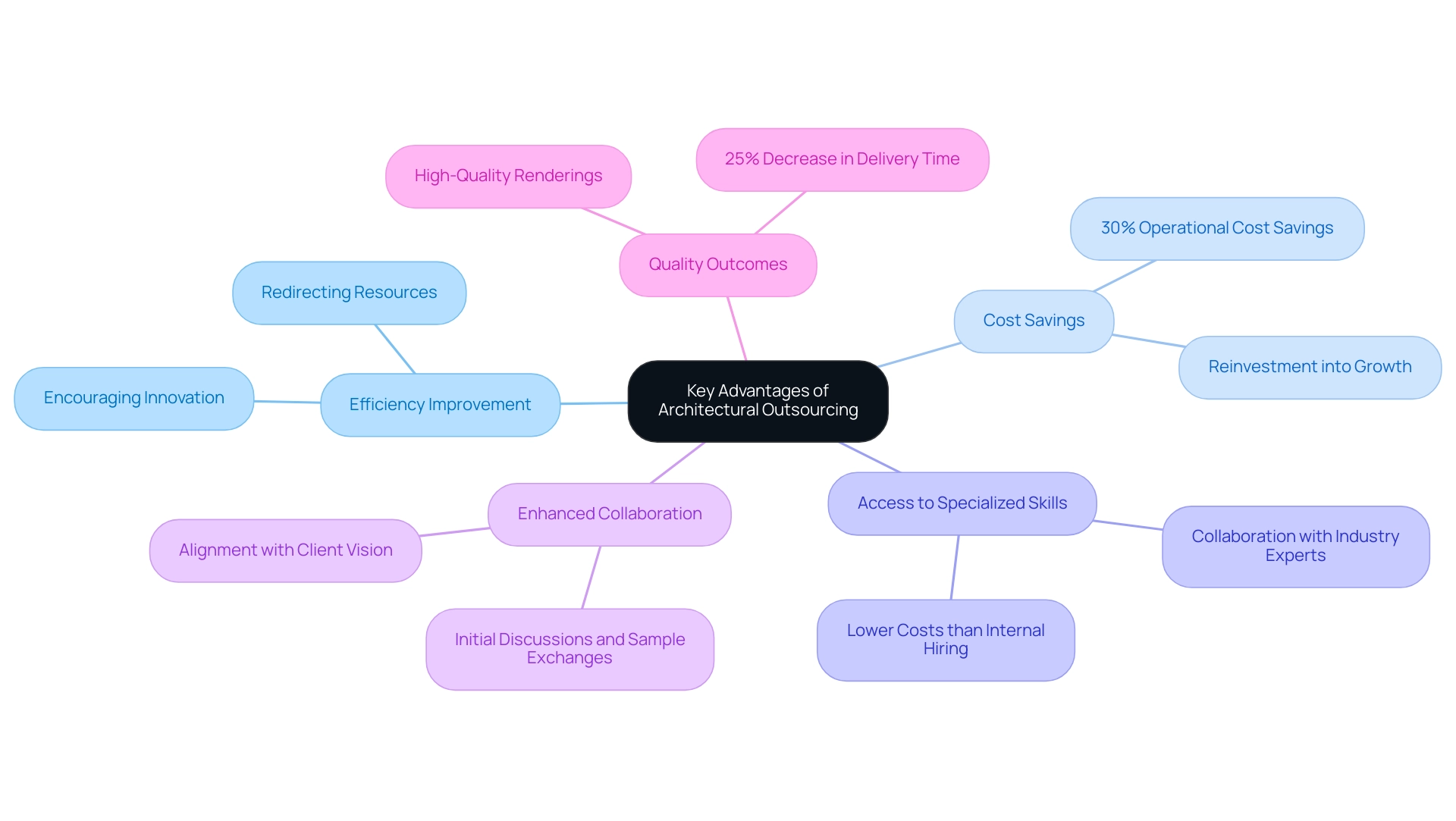
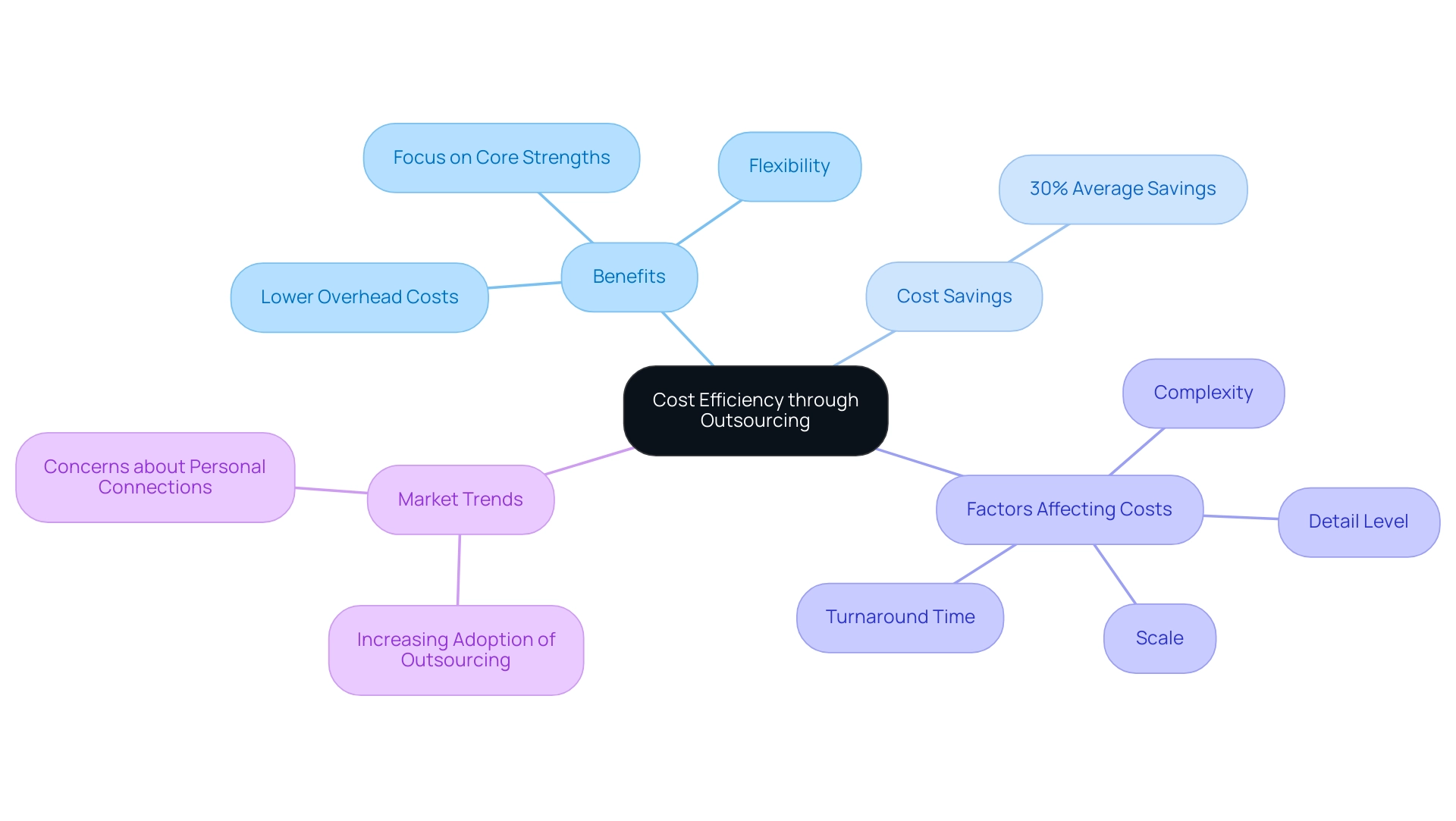
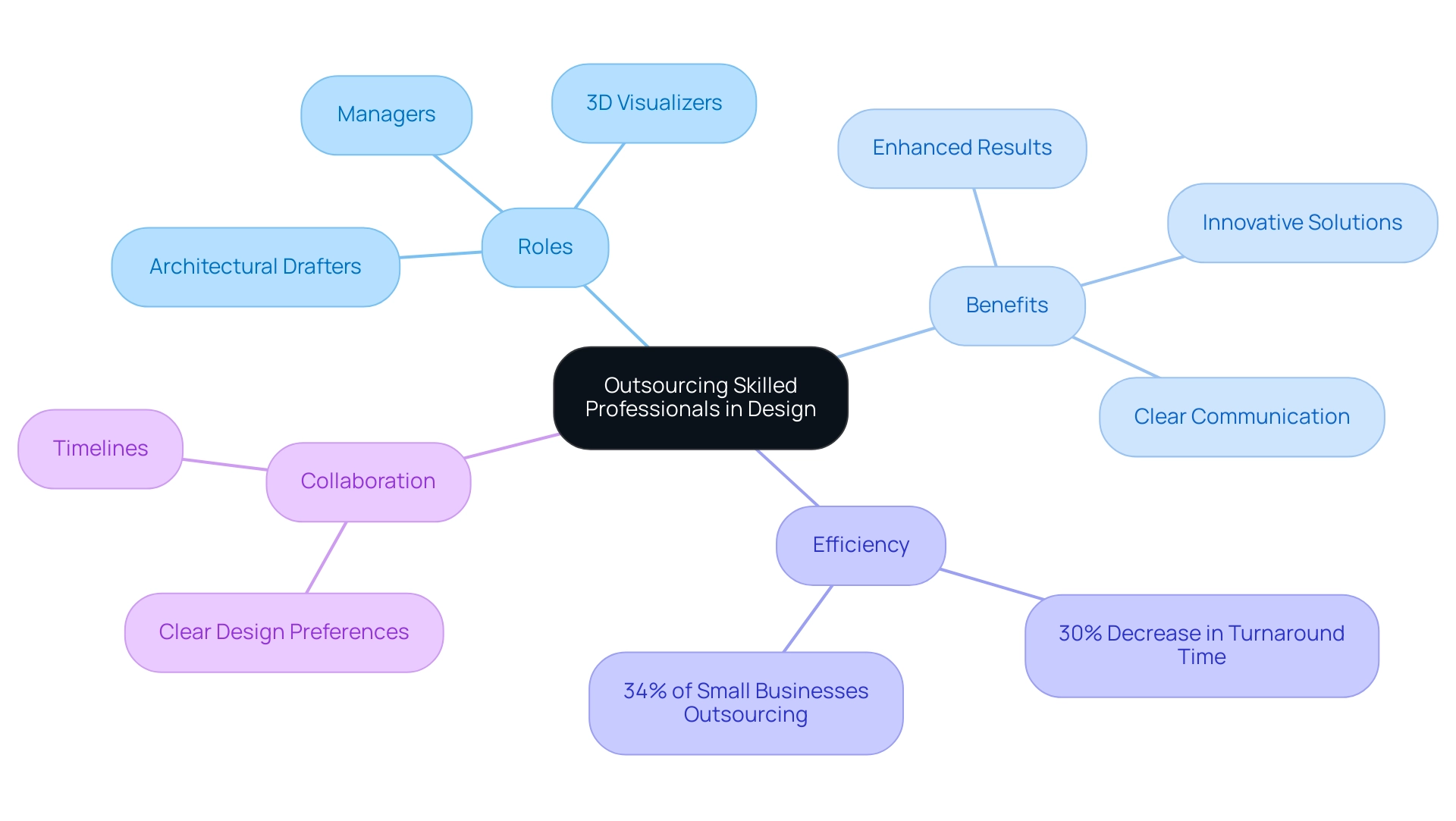
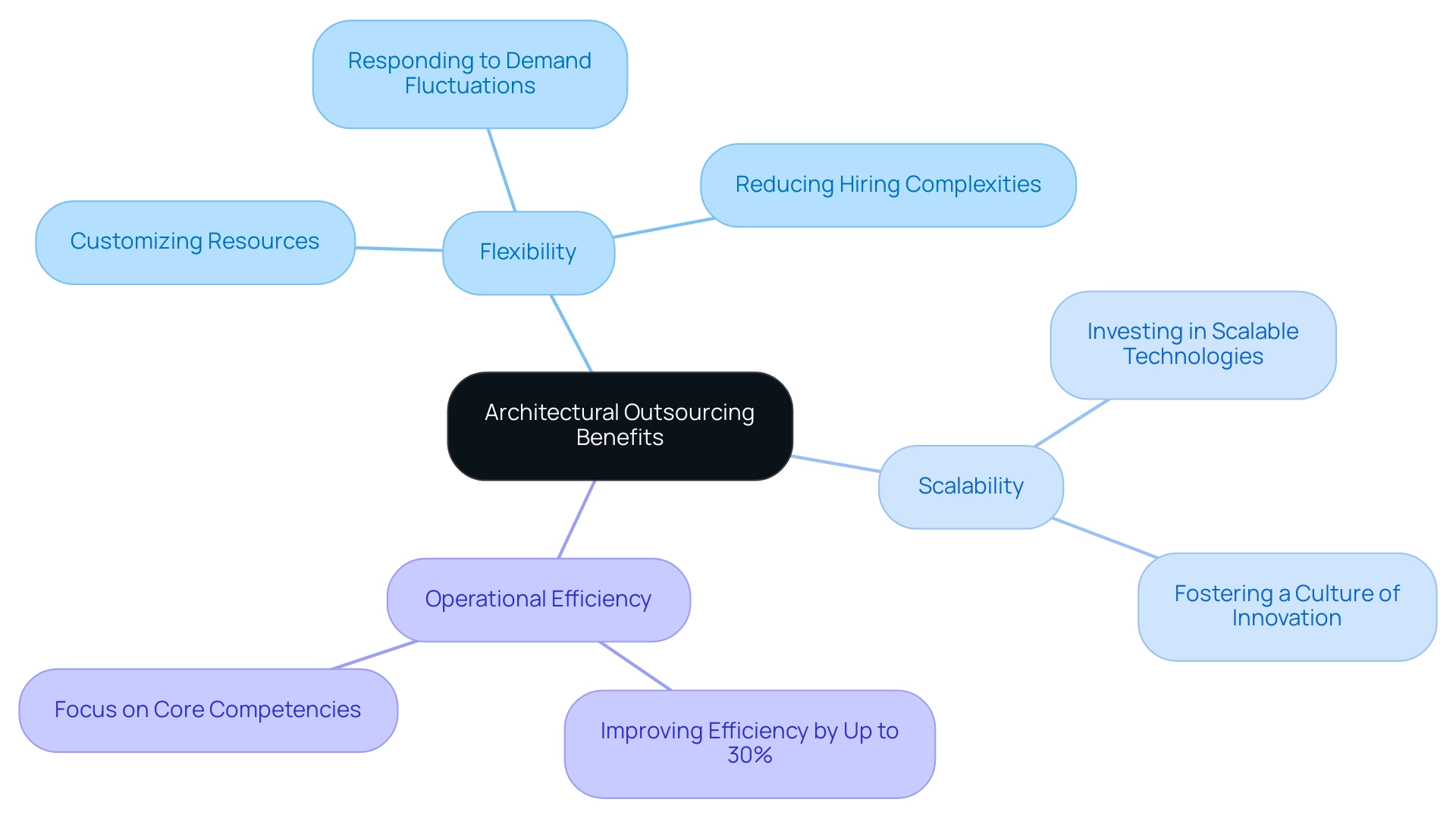
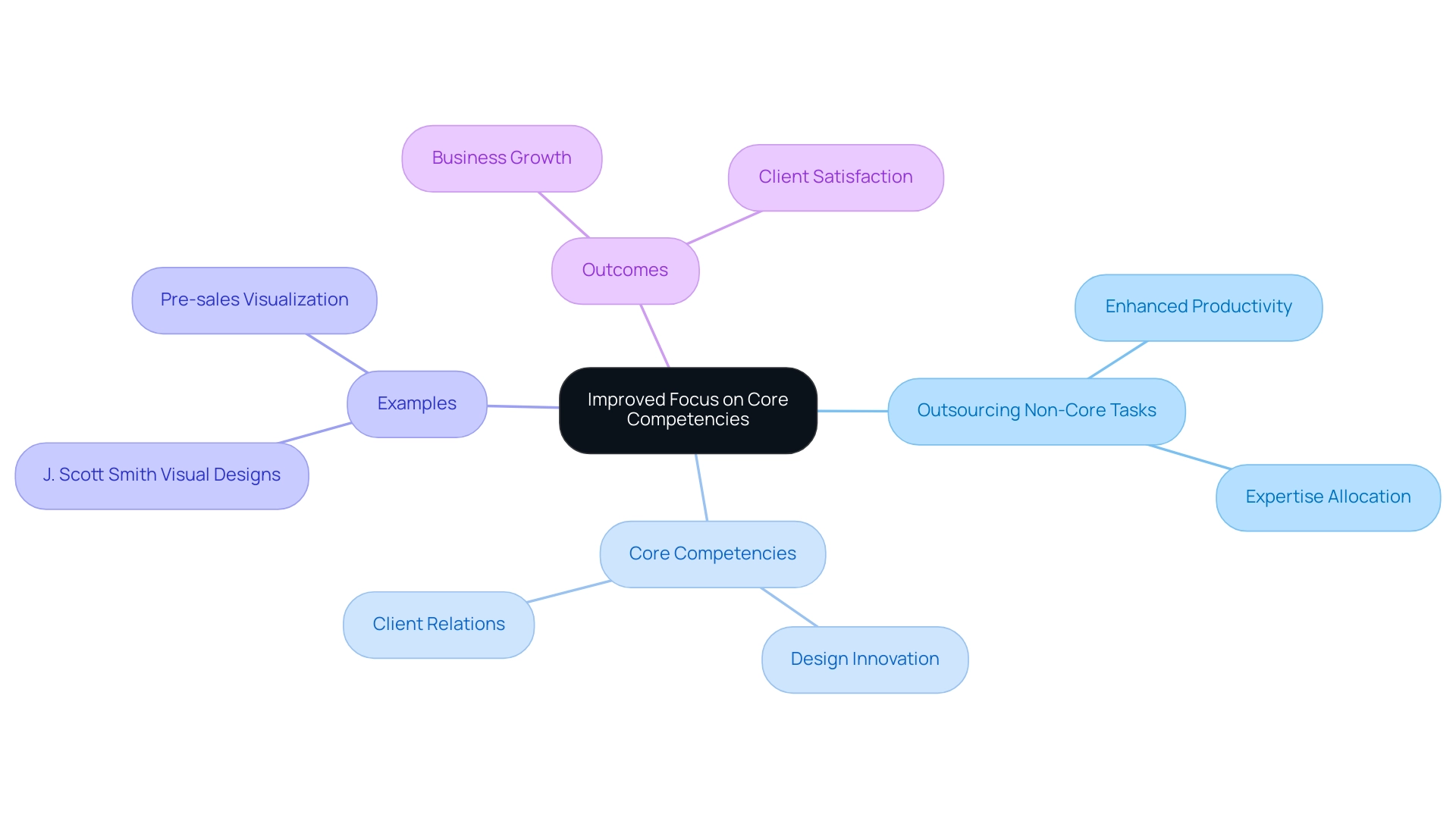
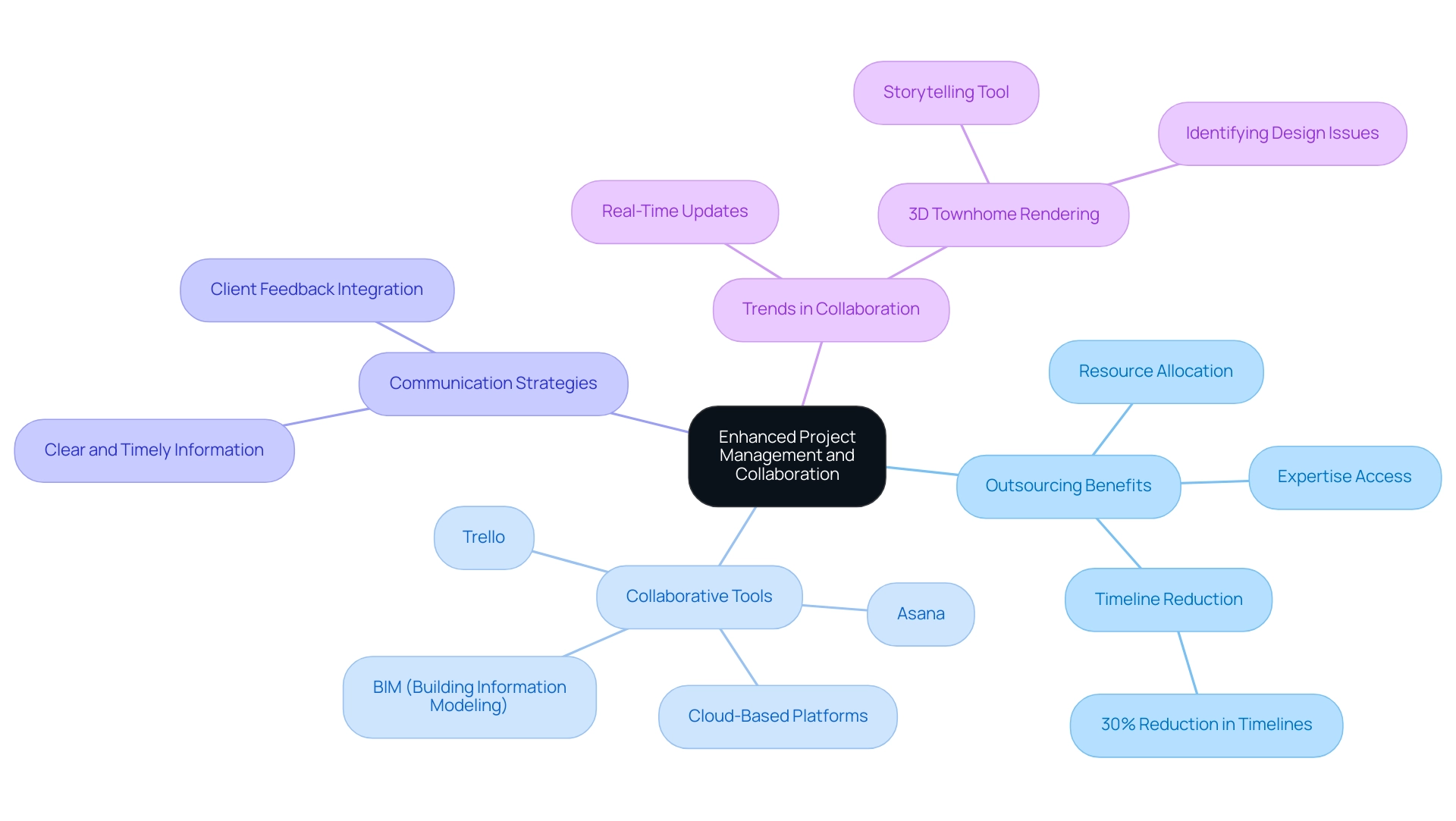
0 Comments